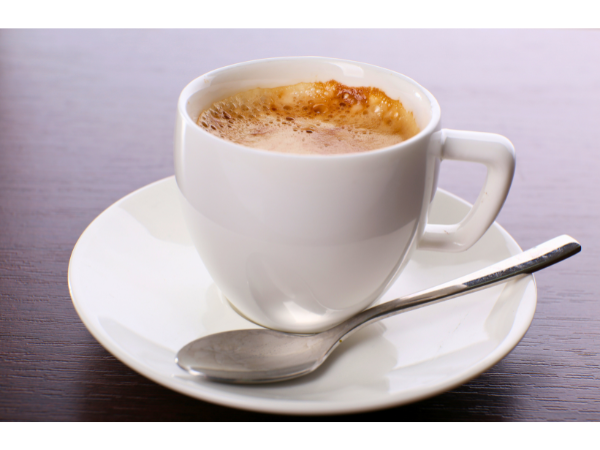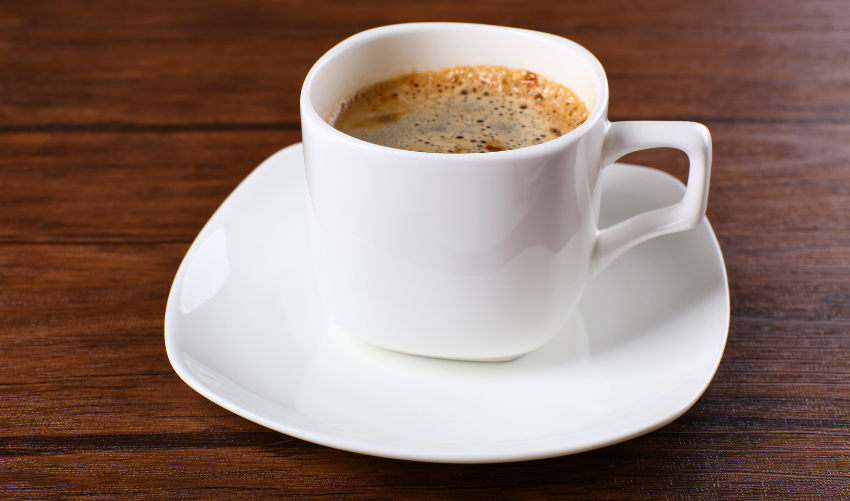Decaf coffee is often misunderstood. Many people enjoy it, but few know how it’s actually made. The process behind removing caffeine from coffee beans is both fascinating and carefully controlled.
In this guide, we’ll take a closer look at how decaf coffee is created, explore the different methods used, and clear up some common myths along the way.
What Is Decaf Coffee?
Decaf coffee allows people to enjoy the taste of coffee without the buzz. But what is decaf coffee? It is coffee that has had most of its caffeine removed. The process of making decaf coffee can seem complex.
Decaf coffee is short for decaffeinated coffee. It is made from regular coffee beans. The main difference is that most of the caffeine is taken out. Here are some key points about decaf coffee:
- Caffeine Content: Decaf coffee has about 2 to 5 milligrams of caffeine per cup.
- Flavor: Many people find the taste similar to regular coffee.
- Health Benefits: It may help reduce anxiety and improve sleep.
- Brewing Methods: Decaf can be brewed like regular coffee.
Decaf coffee offers a great alternative for those who love the flavor of coffee but want to avoid too much caffeine.
How Is Decaf Coffee Made?
The process of making decaf coffee involves several methods. Each method removes caffeine differently. Here are the main methods:
| Method | Description |
|---|---|
| Solvent Method | Uses chemical solvents to remove caffeine. |
| Swiss Water Process | Uses hot water and carbon filters to extract caffeine. |
| CO2 Method | Uses carbon dioxide to capture caffeine while keeping flavor. |
Decaf coffee provides a great option for coffee lovers. It allows enjoyment without the side effects of caffeine.
Decaffeination Process
Decaffeination is the process of removing caffeine from coffee beans. The decaffeination process ensures that coffee lovers can enjoy their favorite drink without the jitters.
Water Method
The water method is a natural way to decaffeinate coffee. It uses only water to remove caffeine. Here is how it works:
- Soak green coffee beans in hot water.
- Caffeine dissolves in the water.
- Separate the beans from the water.
- Pass the water through a filter to remove caffeine.
- Reuse the filtered water to soak new beans.
This method keeps the flavors of the beans intact. The water method is often called the Swiss Water Process. It is chemical-free and has several benefits:
- Preserves the natural flavors.
- Safe for health.
- Environmentally friendly.
The water method is popular among health-conscious coffee drinkers. It offers a clean and pure taste while keeping the coffee’s aroma intact.
Chemical Solvent Method
The chemical solvent method uses chemicals to remove caffeine from coffee beans. This method is efficient but involves chemicals. Here’s how it works:
- Steam the coffee beans to open their pores.
- Soak the beans in a chemical solvent.
- The solvent binds to the caffeine and removes it.
- Rinse the beans to remove any leftover solvent.
Common solvents used are methylene chloride and ethyl acetate. Some benefits of this method include:
- Quick caffeine removal.
- Cost-effective for large batches.
Though efficient, some consumers worry about chemical residues. Many brands ensure their beans are safe and clean. Always check for certifications to ensure quality.

Carbon Dioxide Method
The carbon dioxide method is a modern technique for decaffeination. It uses carbon dioxide under high pressure to extract caffeine. This method is known for preserving flavor. Here’s how it works:
- Place coffee beans in a chamber.
- Inject pressurized carbon dioxide into the chamber.
- The carbon dioxide binds with caffeine.
- Separate the caffeine-rich carbon dioxide.
- Return the beans to their original state.
This method has several advantages:
- Maintains coffee’s flavor and aroma.
- Uses less water compared to other methods.
- Environmentally friendly.
Due to its efficiency and safety, the carbon dioxide method is gaining popularity. It is a great choice for those who want high-quality decaf coffee.
Types Of Decaf Coffee Beans
Two main varieties dominate the coffee world: Arabica and Robusta. Additionally, coffee lovers often debate between single-origin and blended coffees. Each type has unique qualities that affect taste and experience.
Arabica Vs. Robusta
Arabica and Robusta are the two most popular coffee beans used for decaffeination. Both have distinct flavors and characteristics.
- Arabica Beans:
- Known for their smooth and delicate flavor.
- Contain less caffeine than Robusta.
- Grown at higher altitudes, which enhances their taste.
- More susceptible to pests and diseases.
- Robusta Beans:
- Have a stronger, bolder flavor.
- Contain about twice as much caffeine as Arabica.
- Grown in lower altitudes, making them hardier.
- More resistant to diseases and pests.
Choosing between Arabica and Robusta depends on personal taste. Arabica appeals to those who prefer a mild flavor. Robusta suits those who enjoy a strong, intense coffee experience.
Single-origin Vs. Blends
Decaf coffee can also be categorized as single-origin or blends. Each type offers a unique tasting experience.
- Single-Origin Coffee:
- Comes from one specific region or farm.
- Showcases unique flavors based on local soil and climate.
- Often sought after by coffee enthusiasts.
- Can be more expensive due to limited supply.
- Blended Coffee:
- Mix of beans from different regions.
- Creates a balanced flavor profile.
- Often more affordable than single-origin.
- Allows roasters to adjust flavors and consistency.
Choosing between single-origin and blends depends on personal preference. Single-origin offers a unique experience. Blends provide a consistent and familiar taste.
Flavor Profiles Of Decaf
Decaffeinated coffee often gets a bad rap for lacking flavor. Many think it tastes bland or weak. This idea is changing as coffee lovers discover the rich, complex flavors in decaf.
Understanding Flavor Profiles
The flavor profile of decaf coffee can vary widely. This variation depends on several factors:
- Origin: Coffee beans from different regions taste different.
- Processing method: How beans are decaffeinated impacts flavor.
- Roast level: Light, medium, or dark roasts provide different tastes.
While decaf may have a reputation for being flat or dull, careful sourcing and roasting can bring out rich, nuanced flavors. With the right beans and method, decaf coffee can taste just as satisfying as its caffeinated counterpart.
Common Flavor Notes
Decaf coffee can offer a range of flavors. Here are some common notes:
| Flavor Note | Description |
|---|---|
| Chocolate | Rich, sweet tones similar to dark chocolate. |
| Fruity | Bright and tangy, resembling berries or citrus. |
| Nuts | Earthy, smooth flavors like almonds or hazelnuts. |
| Floral | Delicate notes reminiscent of flowers. |
These common flavor notes show that decaf coffee can be just as complex and enjoyable as regular coffee. Exploring different varieties can reveal a surprising range of tastes to satisfy any coffee lover.
Factors Influencing Flavor
Several factors influence the flavor in decaf coffee:
- Decaffeination method: Different methods like Swiss Water or CO2 affect taste.
- Bean quality: Higher quality beans yield better flavors.
- Roasting technique: Different roasting times and temperatures change flavor profiles.
Understanding these factors helps you make better choices when selecting decaf. Whether you prefer bold, smooth, or bright flavors, knowing what shapes the taste can guide you toward the perfect cup.
Choosing Your Decaf
Finding your ideal decaf coffee involves some exploration. Consider these tips:
- Try different origins.
- Experiment with roast levels.
- Explore local roasters for unique options.
Decaf coffee can surprise you with its rich flavors. Don’t overlook it in your coffee journey.
Health Benefits Of Decaf
Decaffeinated coffee often gets a bad rap. Many think it lacks flavor or benefits. However, decaf has unique health benefits that deserve attention. This section explores how decaf coffee can be a healthy choice. It offers antioxidants and helps those sensitive to caffeine.
Antioxidants
Decaf coffee is rich in antioxidants. These compounds help protect your cells from damage. They fight free radicals, which can lead to serious diseases. The antioxidant content in decaf coffee is similar to that in regular coffee.
Here are some key benefits of antioxidants found in decaf:
- Support heart health.
- Reduce inflammation.
- Lower risk of certain cancers.
- Enhance brain function.
A study showed that decaf coffee contains a variety of antioxidants:
| Antioxidant | Benefit |
|---|---|
| Chlorogenic Acid | May lower blood pressure. |
| Caffeic Acid | Has anti-inflammatory properties. |
| Melanoidins | Can reduce oxidative stress. |
Including decaf coffee in your diet can boost your antioxidant intake. This can be beneficial for overall health.
Reduced Caffeine Sensitivity
Many people are sensitive to caffeine. This can cause jitters, anxiety, or sleep problems. Decaf coffee is a great alternative. It has minimal caffeine, making it easier on the body.
For those with caffeine sensitivity, decaf offers several advantages:
- Enjoy the taste of coffee without the side effects.
- Stay alert without feeling anxious.
- Drink coffee later in the day without affecting sleep.
Decaf allows coffee lovers to maintain their routine without the discomfort caffeine can bring. It’s a gentler option that still satisfies the craving for a rich, flavorful brew.

